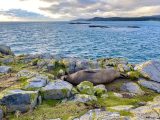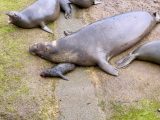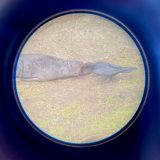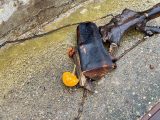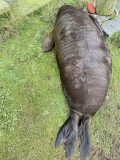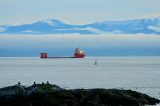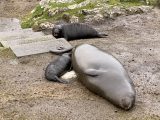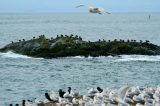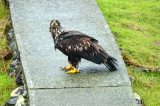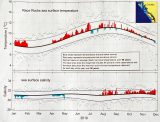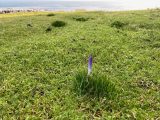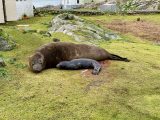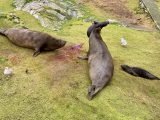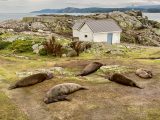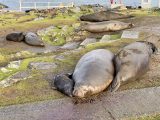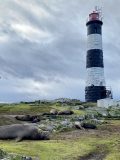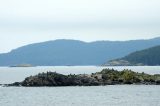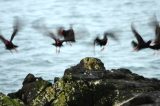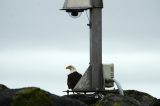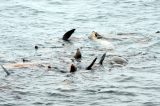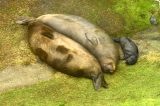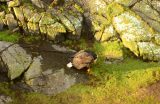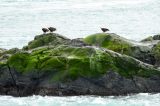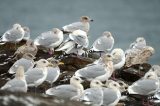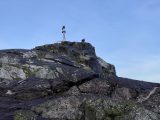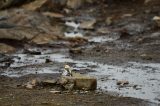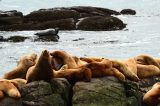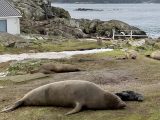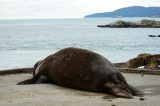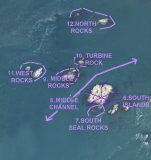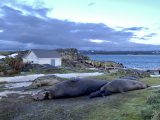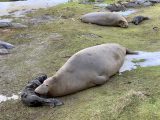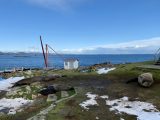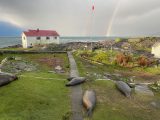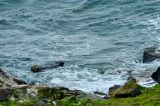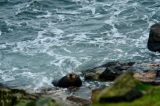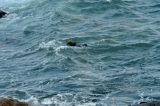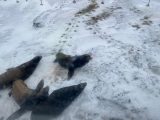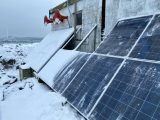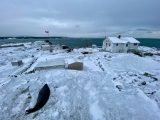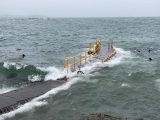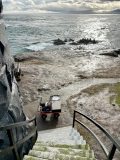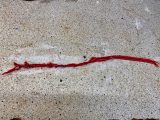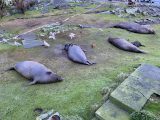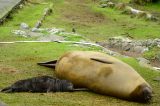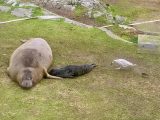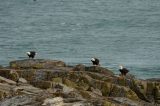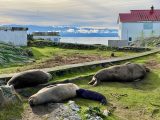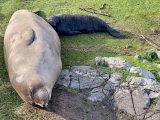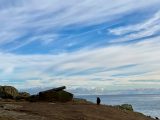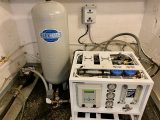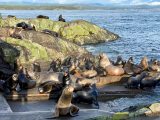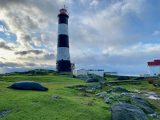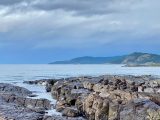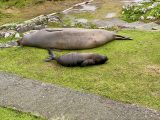Wind: yesterday 0-15 knots from E to S, today 0-10 knots from E to N
Sea State: yesterday and today rippled
Visibility: yesterday and today between 10-15 NM
Sky: yesterday cloudy with periods of rain and sun, clear overnight, today cloudy with periods of sun
Temperature: both days 7-10 °C
Atmospheric CO2: 414.08 ppm (recorded by NOAA at Mauna Loa Observatory, Hawaii)
The five day old elephant seal pup died overnight. It was in rough shape yesterday, possibly from attacks by other elephant seals. In the morning yesterday, it had fresh blood on its face and the alpha male was lying on the pup. Ravens and black turnstones have been pecking at the seals face occasionally for the past day.
The first elephant seal pup, which is fending for itself now as a weaner, was lying on its back today and I could tell it was a male. See the photo below. I am not sure the sex of the other pups, as I haven’t had a good look at their abdomens.
There were four visitors to the island yesterday. Jeff brought out Greg, Alex and Ric to work on the power issues. They hooked up a backup generator to help power the island and top up the batteries. In the afternoon, Greg brought a diesel delivery. Now, the island has a full supply of fuel for when the main generator gets fixed within the next few days. In the past few days, there has a been some power generated by solar energy, which has helped keep the batteries charged. Thanks to some IT help from Dan at the college, now there is internet for the weather systems and monitoring the power.
Four eco tour boats were in the reserve over the past two days.
Results of weekly megafauna and bird census done on Saturday afternoon:
10 elephant seals (3 pups, 3 adult females, 4 adult males)
355 california sea lions
111 steller sea lions
6 harbour seals
36 bald eagles (29 adults, 7 juvenile)
2 ravens
312 pelagic cormorants
62 double-crested cormorants
51 brandt’s cormorants
972 gulls (the majority are thayer’s gulls)
2 canada geese
61 black oystercatchers
1 whimbrel
7 harlequin ducks
41 surfbirds
47 black turnstones
1 snow bunting
1 fox sparrow
- One of the adult male elephant seals has been resting here near the high rock point of the island for the past several days.
- The alpha male elephant seal is lying on the fourth pup.
- The body of the fourth elephant seal pup being pecked at by a raven, as seen through the spotting scope from the top of the tower.
- A small gourd is the most unusual thing that has washed ashore recently.
- The first born pup is a male. It was lying on its back, which gave me a chance to look at its abdomen. About two-thirds the way from its head to its tail flippers it has four features that form a diamond shape: a navel indentation, two nipples and a penile opening.
- The ship Sun Rise was seen heading west, a few kilometres south of Race Rocks. Last Saturday, it delivered the two newest hybrid electric BC Ferries to Victoria.

